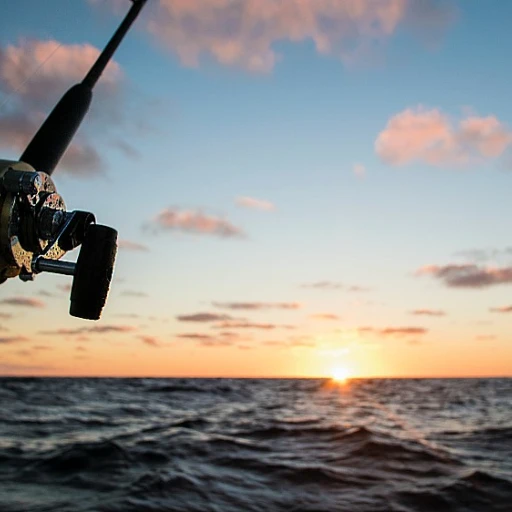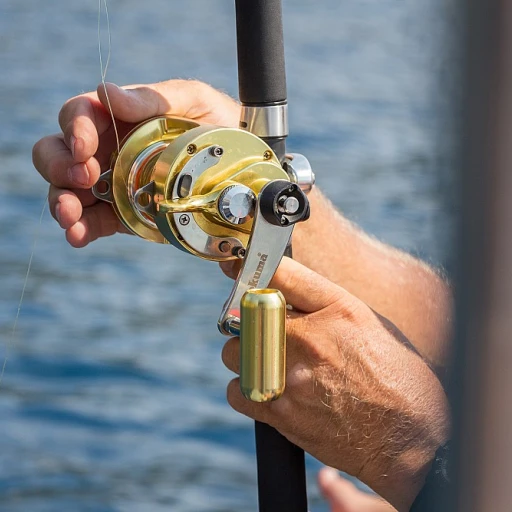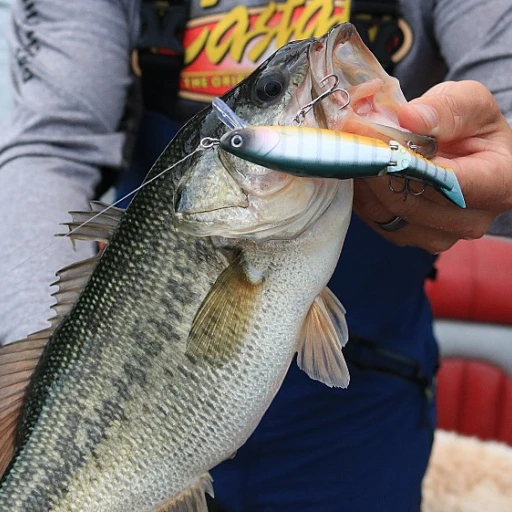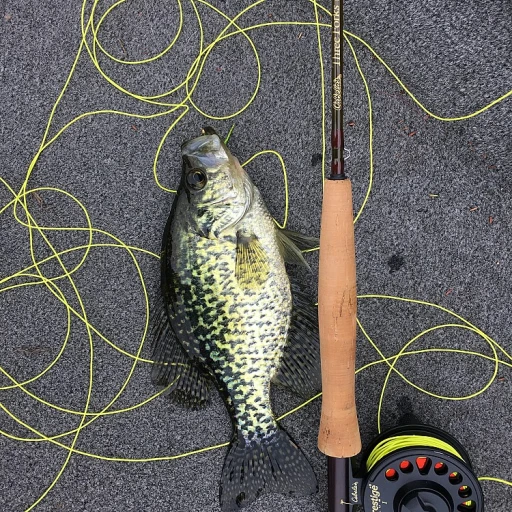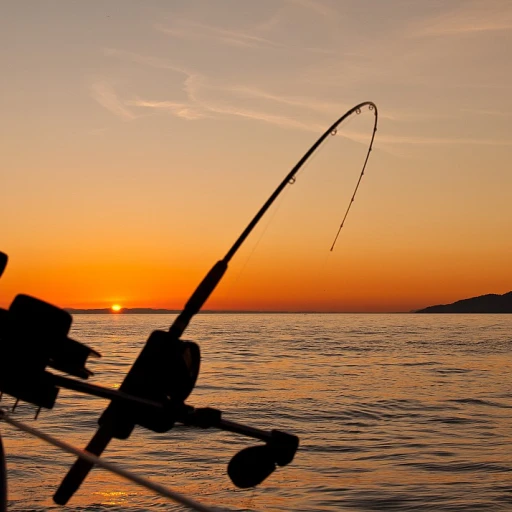Understanding the walleye: characteristics and behavior
Unveiling the unique walleye anatomy
The walleye, scientifically known as Sander vitreus, is a fascinating species with unique characteristics making it a prized catch among anglers. One of the most notable features affecting walleye fishing tactics is the reflective layer of pigment called tapetum lucidum found in their eyes. This feature grants them superior vision in low light conditions, such as early mornings, late evenings, or murky waters, often referred to by anglers as 'walleye chop'. According to the Minnesota Department of Natural Resources, this ability to see in dim settings is what primarily influences their feeding habits and makes targeting them during low-light periods particularly effective.Behavioral quirks that set walleyes apart
Walleyes are known for their elusive and sometimes unpredictable behavior. These fish tend to be bottom-dwellers and are frequently found in deep waters during daylight hours. They usually migrate towards shallow regions at night, seeking out schools of minnows, leeches, night crawlers, and other live bait. The Missouri River, Lake Erie, and the Great Lakes are some of the prime locations for walleye fishing, thanks to these bodies of water providing an ideal habitat with ample cover and nutrients. The Michigan Department of Natural Resources notes that walleyes are particularly attracted to areas with a sandy or rocky bottom, where they can ambush their prey more effectively.Understanding walleye feeding patterns
Knowing when and how walleyes feed can increase your chances of a successful catch. These predators are opportunistic feeders, predominantly hunting during low-light conditions or in turbid waters. Walleye fishing success often hinges on using the right bait at the right time. Anglers swear by the effectiveness of blade baits, medium action spinning reels, and live bait like minnows, leeches, and night crawlers. Studies from Fisheries and Oceans Canada suggest that during times of thermal stratification in lakes, walleyes are more likely to be concentrated in the thermocline layer where the water temperature is optimal for their metabolism. For detailed information on precise bait choices for walleyes, check out our guide to maximizing your catch with the baitcasting precision advantage here.Top walleye fishing spots in North America
Prime locations for walleye fishing aficionados
If there’s one thing any angler chasing after walleye dreams about, it’s knowing the best spots to cast their line. Walleye hotspots aren't just sprinkled anywhere—they're found in specific water bodies that offer the unique conditions walleye thrive in. Here are some top spots spread across North America where you can experience prime walleye fishing:
Lake erie: a walleye heaven
Lake Erie, one of the Great Lakes, is a well-known paradise for walleye anglers. This lake is often in the spotlight, thanks to its abundant walleye population. According to the Minnesota Department of Natural Resources, Lake Erie has one of the highest reproductive success rates for walleye. Many fishers report great catches using live bait like minnows, leeches, and nightcrawlers, especially during the low-light hours of dusk and dawn when the walleye's layer pigment called tapetum lucidum gives them an edge.
Canadian walleye wonders: lake of the woods and beyond
Canada boasts some of the most prolific walleye waters. Lake of the Woods, straddling Ontario and Manitoba, offers an amazing backdrop with over 14,000 islands. It's not just the stunning scenery; the lake's deep water and clear areas make it a walleye favorite. Many local anglers swear by using blade baits and jig heads to catch walleyes, often finding success in the lake’s southern bays.
The mighty missouri river
The Missouri River stretches its walleye-rich arms through multiple states, but South Dakota and Missouri shine as top locations. According to a 2015 study by the U.S. Department of Natural Resources, walleye populations in these areas have been notably robust. The river’s deep-water spots and influential currents create ideal conditions for walleyes, especially where the river meets tributaries and forms fish-holding habitats.
Northward to where the big ones hide: saskatchewan's tobin lake
Saskatchewan’s Tobin Lake is famed in the angling community for producing some of the largest walleyes ever caught. The walleye's sander vitreus species found here have thrilled anglers who prefer the thrill of reeling in a massive catch. Essential to these catches are medium action spinning reels combined with effective blade baits and live bait setups.
Getting depths right: michigan's sneaky walleye spots
Within Michigan, there are numerous lakes and rivers stocked with walleye. Lake St. Clair and the Saginaw Bay are noteworthy locations. Anglers often target these waters with medium action spinning rods, employing techniques like trolling and bottom bouncing to lure deep water walleyes effectively. As the Michigan Department of Natural Resources highlights, these water bodies are also good for their diverse fishing offerings beyond walleye, including bass and salmon.
Every walleye angler knows that finding the right spot is half the battle, so be sure to explore these top locations on your next fishing adventure. And if you're curious about setting up your gear for catfish, check out this expert guide.
Best baits and lures for walleye fishing
Understanding the walleye behavior to choose the best baits
The key to successful walleye fishing lies in understanding these fascinating creatures. Walleye, also known as sander vitreus, are a popular target for anglers due to their elusive nature and delicious taste. They thrive in various waters, from the Great Lakes to rivers and smaller lakes in states like Minnesota, Michigan, and regions in Canada.Walleyes are typically more active during low light conditions, such as dawn and dusk. This is due to a specialized layer of pigment in their eyes called the tapetum lucidum, which gives them a significant advantage in murky or low-light waters by reflecting light back through their retina. As a result, walleye are adept at hunting when other fish might struggle, making dawn, dusk, and nighttime prime times for walleye fishing.
Selecting the perfect bait for walleye
When it comes to bait, minnows, leeches, and night crawlers are highly effective live bait options for catching walleye. For instance, using live bait minnows can entice even the wariest fish to strike. These baits are especially effective in rivers like the Missouri River and Lake Erie. Moreover, anglers often opt for blade baits, which mimic the movement of natural prey, making them irresistible to walleyes.Anglers may also consider artificial lures, especially in areas with high pressure. Lures should be chosen based on the water conditions and the specific habits of the local walleye population. A medium action spinning rod paired with a suitable jig head can be incredibly effective when fishing for walleyes. Techniques involving jigs, such as bouncing them off the bottom or slow trolling, often yield great results.
For deep water popular spots such as Lake Ontario or the south parts of the Great Lakes, consider using deeper diving lures. In these areas, walleyes tend to stay closer to the bottom. Blade baits and crankbaits that can reach these depths are a solid choice for attracting walleyes hiding in deeper waters.
Why choose live bait?
Live bait is often preferred for its effectiveness in attracting walleye. When using leeches, night crawlers, or minnows, anglers can appeal to the walleye’s predatory instincts. The movement and scent of live bait can make a significant difference in enticing walleyes to strike. In the murky waters of the Midwest or when walleye fishing in places like Lake Erie, the use of live bait can often be the deciding factor between a successful outing and going home empty-handed.Beyond anecdotal evidence, several studies have supported the effectiveness of live bait. For example, a report from the Minnesota Department of Natural Resources (DNR) highlights how live bait increases the likelihood of catching walleyes compared to artificial options alone. To maximize your success, ensure that your live bait is healthy and lively.
In conclusion, understanding walleye behavior and their preferences for certain baits can significantly improve your fishing success. Whether using live bait or artificial lures, tailoring your approach to the specific conditions and habits of walleyes in your chosen fishing area will lead to more productive and enjoyable outings. For more tips on baitcasting and precision in walleye fishing, check out this comprehensive guide.
Techniques for successful walleye fishing
Jigging technique for walleye
When it comes to catching walleye, jigging is a tried-and-true method. This technique involves moving a jig up and down in the water to entice the fish. The key here is to use a quality jig head, which is essential for attracting walleye. A medium action spinning reel works wonders for this.
Anglers often use live bait such as minnows, leeches, and night crawlers combined with jig heads. The combination of the movement and the bait is irresistible to walleyes. Using a blade on your jig can add extra attraction, a tip from many successful walleye fishermen.
According to a study by the Minnesota Department of Natural Resources, walleye respond well to this method, particularly in deep water. This approach is especially effective in waters like Lake Erie and the Great Lakes where walleyes are abundant.
Dragging technique for targeting walleye
Dragging is another method worth mentioning for catching walleye. This involves slowly pulling a weighted bait along the bottom of the water to mimic the movement of prey. It's particularly effective during low light conditions or in murky waters where walleyes prefer to hunt.
Using live bait such as minnows or night crawlers works well with this technique. The Missouri River is a popular spot for using dragging techniques due to its deep water channel and abundant walleye population.
Vertical jigging for deep water walleye
For those targeting deep water walleye, vertical jigging is a top-notch method. This involves dropping your jig straight down to the bottom and quickly retrieving it, then allowing it to flutter back down. It can be especially effective in the Great Lakes where walleye schools are found deeper.
Experts like David McElroy, a seasoned angler from Wisconsin, swear by vertical jigging in late summer when walleye move to deeper waters. Using blade baits combined with live minnows has led to significant catches, often beyond expectations.
Trolling: covering more water
Trolling allows anglers to cover a larger area of water, increasing the chances of locating active walleye. This technique involves dragging lures behind the boat at various speeds. For trolling, medium action spinning rods are recommended, especially when using crankbaits or spinners.
Leeches and night crawlers are effective when used with trolling rigs. The reflective layer pigment called tapetum lucidum in walleye eyes makes them more active during low light, making trolling in the morning or evening particularly productive.
Casting and retrieving with blade baits
One of the most popular methods for walleye fishing is using blade baits. These lures come in various sizes and colors, making them versatile for different fishing environments. The key to success with blade baits is the retrieval speed and technique.
In areas like the Mississippi River and Lake Ontario, many anglers opt for a slow, steady retrieve to mimic injured prey, which walleyes cannot resist. According to a report from the Michigan Department of Natural Resources, blade baits have a high success rate in catching both sander vitreus and other species like bass and salmon.
Seasonal walleye fishing tips
Spring into action
As soon as the ice melts off the lakes and rivers, walleye start to become more active, becoming an excellent opportunity for anglers. In water temperatures between 38°F to 50°F, walleyes begin their spawning period, making early spring a hotspot for walleye fishing. Since they are typically found in shallow waters, especially in river mouths and on gravel beds, targeting these areas can yield good results.
A key technique during this time involves using live bait like minnows, leeches night crawlers, and worms which can be highly effective. Another method is to use blade baits such as the Heddon Sonar, which can appeal to walleye's tendencies to strike out of reaction.
Summer strategies
As summer heats up, walleyes move deeper into cooler waters, often found at 10 to 20 feet during the day. They tend to return to shallower waters as the sun sets. Trolling with medium action spinning rods using crankbaits or bottom bouncers can be successful during this time. The reflective layer pigment called tapetum lucidum in their eyes helps them to hunt in low light conditions, making dawn and dusk prime times for fishing.
According to the Minnesota Department of Natural Resources, anglers fish walleye in deep waters by employing techniques like slip-bobbering and vertical jigging with a jig head or live bait. Blade baits remain effective, especially when slow-trolling along drop-offs and submerged structures.
Fall feeding
When temperatures drop in fall, walleyes increase their feeding activity to prepare for winter, making this another great season for fishing. During this period, they can be found near bottom structures in lakes and rivers. Anglers should consider using larger, more aggressive baits such as spoons and diving crankbaits. The reflective layer (tapetum lucidum) again plays a key role in allowing them to hunt effectively in the low-light conditions of autumn evenings.
Winter walleye
Ice fishing for walleye is a popular winter activity in the northern United States and Canada. During this season, walleyes tend to congregate in deep waters, often around 20 feet or deeper, near structures like submerged islands and rocky points. Using live bait minnows leeches night crawlers on a jig head or a small spoon jig is recommended.
According to a study by the Department of Natural Resources in Wisconsin, specific lakes such as Lake Erie and Lake Ontario provide great ice fishing opportunities for this species. Anglers also benefit from using electronics to locate schools of fish holding walleyes during the cold months.
Whether it's early spring, the height of summer, or the depths of winter, understanding how walleye behavior changes with the seasons will help you become a more successful angler. Using the right techniques tailored to the various times of the year ensures that you'll reel in this prized species consistently.
Walleye fishing gear essentials
Choosing the right rods and reels
When fishing for walleye, you will need a good set of rods and reels. Medium action spinning rods are often preferred by anglers because they provide the necessary sensitivity and strength to handle these fish. Experts like Al Lindner, a well-known figure in the fishing community, suggest using a medium action spinning rod paired with a reel capable of holding 6 to 12-pound test line. This combination offers a balanced setup, allowing you to feel the subtle bites of a walleye and provides the power needed to reel them in.Essential tackle for walleye fishing
Tackle selection is pivotal for a successful walleye fishing trip. Jig heads are a staple in every walleye angler's tackle box. A 1/4 oz. jig is a versatile choice that works in various conditions. Blade baits are another excellent option for walleye fishing, particularly in deeper waters. Their vibration and flash attract walleyes effectively, especially during the colder months. Live bait like minnows, leeches, and night crawlers are incredibly effective for enticing walleyes. Setting them up with a slip bobber rig or simply jigging them at the bottom of a lake or river can bring impressive results.Using electronics and fish finders
Advanced electronics can significantly enhance your fishing experience. Fish finders help pinpoint where walleyes are holding, whether in deep water, near bottom structures, or suspended in the water column. According to a study by the Minnesota Department of Natural Resources, walleyes tend to hold in deeper waters during the daytime and move to shallower waters during low light conditions, like dawn or dusk. Using sonar technology on your boat can help you locate these areas accurately.Proper clothing and safety gear
Safety and comfort are paramount during any fishing trip. Depending on the weather and water conditions, you might need different clothing and safety gear. In colder climates like those surrounding the Great Lakes or upper Midwest states, dressing in layers, including a good quality fishing jacket, can keep you warm and dry. Don't forget to bring along a life jacket, especially if you are fishing on larger bodies of water like Lake Erie or Lake Ontario. The United States Coast Guard reports that 79% of boating fatalities are due to drowning, and most victims were not wearing life jackets.Keeping your gear organized
Being organized can save you a lot of time and frustration on the water. A well-prepared tackle box with various baits, hooks, and other necessary tools can make a big difference. Many anglers also recommend using labeled storage containers for quick access. Ensure your rods and reels are well-maintained, and replace any damaged or worn-out equipment before heading out. This proactive approach can prevent equipment failure during critical moments of your fishing adventure.Cooking and enjoying your walleye catch
Delicious walleye recipes for your fresh catch
When it comes to savoring your walleye catch, there are endless flavors to explore that highlight the fish's delicate, sweet taste. Here are some top recipes that'll make your mouth water.Pan-fried walleye with lemon and herb butter
Pan-frying walleye is one of the simplest and most delicious ways to cook it. You'll need a few basic ingredients: fresh walleye fillets, flour, salt, pepper, butter, fresh herbs, and lemon. Here's how to do it:- Rinse the fish fillets and pat them dry.
- Lightly coat the fillets in seasoned flour (a mix of flour, salt, and pepper).
- Heat a few tablespoons of butter in a skillet over medium heat.
- Once the butter is sizzling, add the fillets and cook for about 3-4 minutes on each side until golden brown and cooked through.
- Squeeze fresh lemon juice over the fillets and garnish with chopped herbs like parsley or dill.
Baked walleye with a crunchy pecan crust
If you're looking for a dish that's a bit more sophisticated, try baking your walleye with a crunchy pecan crust. The combination of sweet, nutty pecans and tender walleye is unbeatable.- Preheat your oven to 375°F (190°C).
- In a bowl, mix together crushed pecans, breadcrumbs, and a bit of melted butter.
- Season your walleye fillets with salt and pepper, then press them into the pecan mixture to coat.
- Place the fillets on a greased baking sheet and bake for 15-20 minutes, or until the fish flakes easily with a fork.
- For extra flavor, drizzle with a honey-mustard sauce before serving.
Grilled walleye tacos with avocado salsa
For a fun and fresh meal, make grilled walleye tacos topped with a zesty avocado salsa. These are perfect for a summer cookout or a quick weeknight dinner.- Rub the walleye fillets with a blend of cumin, chili powder, salt, and olive oil.
- Grill the fish over medium-high heat for about 3-4 minutes per side, or until cooked through.
- Flake the fish into bite-sized pieces.
- Serve the grilled walleye in warm corn tortillas, topped with a simple avocado salsa (diced avocado, tomato, red onion, cilantro, lime juice, and salt).
Smoked walleye dip
If you're a fan of smoked fish, turn your walleye catch into a delicious dip that's perfect for sharing.- Brine the fish fillets in a mixture of water, salt, and brown sugar for a few hours.
- Smoke the walleye over low heat until it’s cooked through and has a nice smoky flavor.
- Flake the smoked fish and mix it with cream cheese, sour cream, lemon juice, capers, and chives.
- Season to taste with salt and pepper.
Conservation and responsible walleye fishing
Maintaining healthy walleye populations
Conservation is key when it comes to walleye fishing. Anglers have to be mindful of regulations and guidelines set forth by various agencies such as the Minnesota Department of Natural Resources. These regulations are established to maintain the delicate balance of walleye populations and ensure they continue to thrive for future generations.
Adhering to catch and release practices
One of the most effective methods of supporting walleye populations is by adopting catch and release practices. It’s not just about letting the fish go, but doing so in a way that minimizes harm. Use a medium action spinning rod and barbless hooks when possible, and release the fish in deep water where it was caught. This helps fish recover faster from the stress of being caught.
Understanding fishing limits and seasons
Be aware of the fishing limits and seasons in your area. In Lake Erie, for instance, there are specific guidelines around the size and number of walleye that can be caught. The United States Geological Survey highlights the importance of following these regulations, noting that violation can significantly impact local walleye populations.
Using sustainable fishing gear
Opt for eco-friendly fishing gear and techniques. For instance, using live bait minnows, leeches night crawlers, or even blade baits reduces the use of harmful plastics. Moreover, fishing from a kayak or using a trolling motor can be less disruptive to walleye habitats compared to larger, motorized boats.
Reports on walleye health issues
Studies and reports by conservation agencies like the Minnesota Department of Natural Resources have noted various health issues impacting walleye populations, including diseases and water quality changes. Being informed about these issues can help anglers make conscientious decisions that support walleye health.
Collaborating with conservation programs
Engaging with local conservation initiatives can make a significant difference. Programs like the Walleye Restoration Program in Wisconsin involve anglers in restocking efforts and habitat improvements. By participating, anglers can directly contribute to the sustainability of walleye populations.
The role of education and community involvement
Education is a powerful tool. Participate in workshops and community events focused on responsible fishing practices. Many departments of natural resources offer these opportunities to educate anglers on the importance of conservation. Involving the community ensures that the collective efforts toward conservation have a broader and more lasting impact.



-large-teaser.webp)
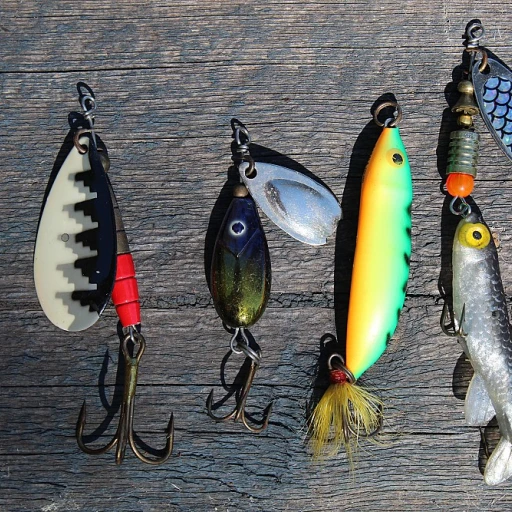
-large-teaser.webp)
-large-teaser.webp)

-large-teaser.webp)
